The Brock String: A marvellously simple, science-backed tool to correct a lazy eye.[1]
How could a device that consists of just 2 parts:
- Colorful beads
- .... and, well.. a string
Still be one of the leading tools to improve a lazy eye in 2025?
Chapter I
The Story Of The Brock String
toward the same point at the same time.”
-Dr. Susan Barry, neuroscientist – famous for gaining stereovision in mid-life

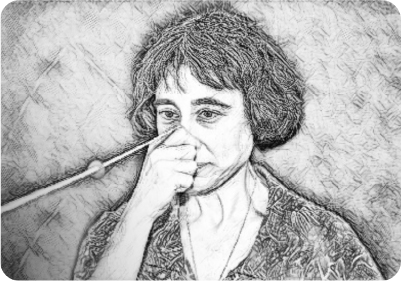
The Brock String got created by Dr. Frederick Brock.
Dr. Brock, born in 1899, was suffering from a lazy eye himself. He taught himself how to see in stereo.
In the mid-1900s, he helped many strabismics see in stereo as well. The Brock String was one of many tools he used in his arsenal.
Dr. Susan Barry, the worlds-best known strabismic who got featured in The New Yorker - had this to say about Dr. Frederick Brock:
“Frederick W. Brock understood strabismus better than any other individual, yet most vision care professionals have never heard of his work.”
- Susan Barry on Brock
That’s a bold statement. But Dr. Frederick Brock seems to be able to back it up. Let’s take a look at how and why the Brock String works:
Chapter II
How The Brock String Works:
‘Binocular Posture’
A person with a lazy eye (strabismus) has
misaligned eyes. Meaning: Both eyes are
not pointing in the same direction.
However, Dr. Frederick Brock was the
first specialist to realize that almost all people with a lazy eye have moments where their eyes are perfectly aligned:
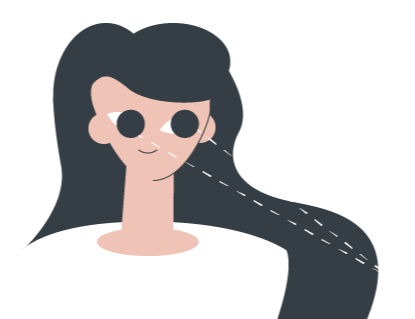
A person with a lazy eye (strabismus) has misaligned eyes. Meaning: Both eyes are not pointing in the same direction.
However, Dr. Frederick Brock was the first specialist to realize that almost all people with a lazy eye have moments where their eyes are perfectly aligned:
“Nearly all strabismics have occasional moments when they maintain binocular vision. The only reason this is not generally known is that most of us have never taken the trouble to discover the fact.”
- Dr. Frederick W. Brock
The Brock String makes use of that latter fact. The tool helps us give immediate feedback on where our eyes are pointing to.
It helps us establish what Brock called ‘Binocular Posture’. This is where both eyes are pointing in the same direction using conscious, mental effort.
“Brock maintained that visual training for all strabismics, including suppressors, amblyopes, alternators, and ambioculars, must involve the establishment of binocular posture.”
- Dr. Susan Barry
And that, curiously, has been proven to cure many strabismics without surgery.
Chapter III
The Only Way To Fix A Lazy Eye
The only way to fix a lazy eye - is where it originated. We have to train – or force
via operative means - both our eyes in the same direction. Click here for a list of all treatment strategies.
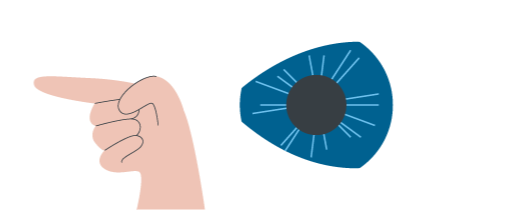
- Surgery works that way: The surgeon forces your eyes to look in the same direction via a precise cutting off the eye muscle.
- And so do all vision therapy methods: The Brock String, VR Training, various Amblyopia Games – they train your eyes to look in the same direction.
Dr. Frederick W. Brock was the first person to realize that. And he did so by studying the anatomy of the eye extensively.
By doing so, he stumbled upon the underlying issue of the lazy eye.
Most doctors or vision professionals today are still not aware of it. We’ll lay it bare in the next chapter:
Chapter IV
The Underlying Issue Of Lazy Eye
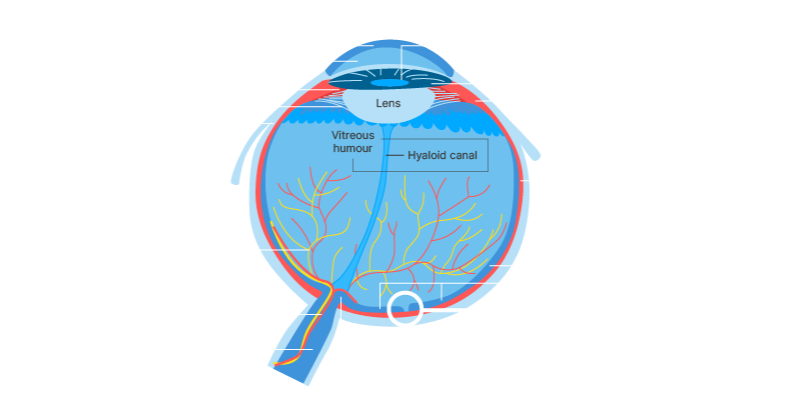
The fovea is a small bump in the eye where our vision is the sharpest.
It is the only region of the retina where 20/20 vision is attainable.[2]
Meaning: For us to be able to read this article, the light rays of this post need to arrive directly at the foveal part of our eye.
The fovea is made for the sharpest vision.
It contains the highest density of cones – and the worst blood supply.[3]
As you can see in this graph, there’s a huge difference between how sharp our vision is at the fovea – versus how sharp it is at any other point of our eye.
Therefore, the visual acuity of our vision is highly dependent on where the light rays land.
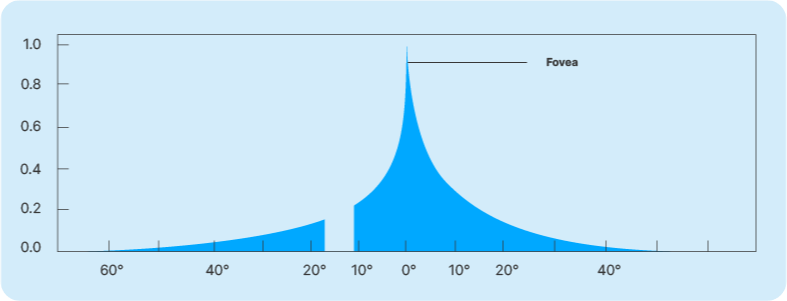
Turn one eye just slightly outwards, inwards, upwards or downwards, and you get a strongly decreased visual acuity.
The perceptive reader has seen that in the last graph there’s a blind spot. This one:
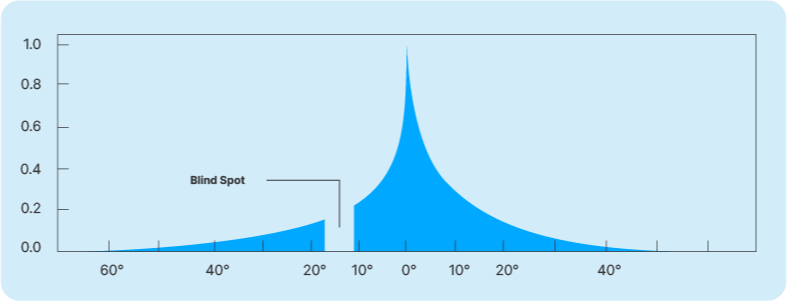
To the non vision professional, this is not known. But all humans have a blind spot in each eye. Here’s a quick game to find out:
R
L
Instructions: Close one eye and focus the other on the appropriate letter (R for right or L for left). Place your eye a distance from the screen approximately equal to three times the distance between the R and the L. Move your eye towards or away from the screen until you notice the other letter disappear. For example, close your right eye, look at the "L" with your left eye, and the "R" will disappear.[4]
Chapter V
The ‘Blind Spot’ And It’s Role In Strabismus
The blind spot is the area of the visual space that corresponds to the area in the eye
where the nerves exit. No eye cells are present
to receive any visual information.

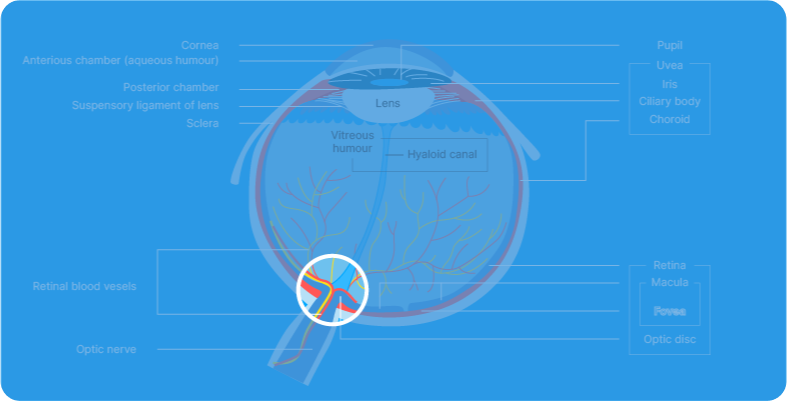
The blind spot is centered about 15° from the fovea on the temporal side of visual space and is about 5° in diameter.[5]
By playing the game before - we realize that the blind spot exists on the left side of our left fovea. And on the right side of the our fovea.
This explains why esotropic strabismus (one eye turning inward) is twice as common as exotropia.[6] And the vast majority of esotropic strabismus is in the 20 – 40 prism dioptres range. [7][8] (Calculation: Prism diopter = 100 * TAN Angle)

The brain of a strabismic has learned to partially – or often completely – suppress the input of one eye by turning it towards the blind spot.
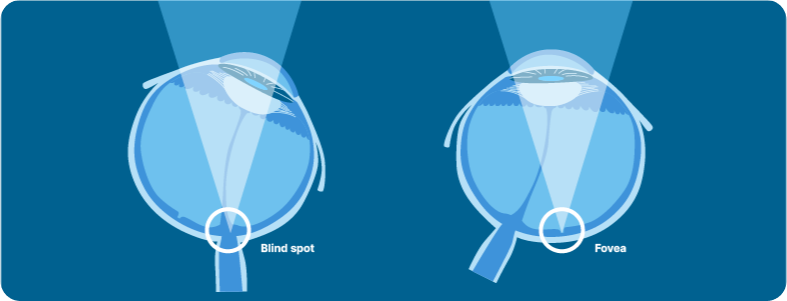
It stands to reason that the first line of treatment for strabismus is to:
- Take the deviated eye out of the ‘blind spot’ position
- Move the eyes progressively closer to perfect alignment
This is not only important for cosmetic purposes, but also for:
- The prevention of amblyopia[9]
- To create the fundament for stereopsis.
Chapter VI
The Brock String and Stereopsis
We’ve seen before that the fovea
is the only place where 20/20 vision is possible.
But not only is the fovea employed for accurate
20/20 vision – while it makes up less than 1%
of the retinal size, it also takes up more than
50% of the visual cortex in the brain.[10]
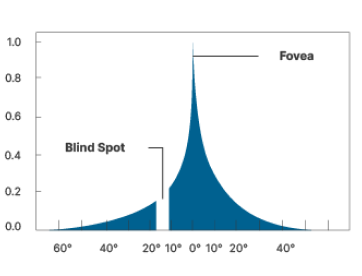

Concluding that the fundamental first step to stereopsis is to align the two eyes properly. Which is why the target angle for surgery should be smaller than 10 prism dioptres to maintain long-term stereopsis. This study found that 4 dioptres was the threshold for true stereopsis:[11]

“When I learned to use the “Brock string,” I received the feedback that I needed to know where my eyes were pointing and then to redirect them so that they were aiming simultaneously at the same point in space.”
- Susan Barry
Over time, knowing where your eyes are pointing to will give you the ability to fuse 2 images together. A term which Dr. Brock called ‘fusion effort’.
“With the Brock string, I learned something that most six month-old infants have already mastered. I learned to aim both eyes at the same place at the same time.”
Chapter VII
How To Use The Brock String
The Brock String can be ordered online for about $10.Once it arrives at your home, you can:
- Stabilize one end of the Brock String where you see fit (I generally used doorknobs)
- Grab the other end of the Brock String
- Look at the first beads – closest to you - and try to fix the images of the 2 eyes into a coherent one

The last step will take some practice. The ideal picture you want to see is this:

Your eye should fuse both of the images together into a full, coherent one.
Yet the first time I tried the Brock String, I saw a picture like this:

This is normal – and this is good. Because it shows you that your eyes are not pointing in the right direction – and not fusing the 2 individual images together. If you’re not seeing the fused image, you will benefit from training with the Brock String.
Chapter VIII
My Experience With The Brock String
The first time I’ve used the Brock String I’ve seenthe un-fused image. In fact, I wasn’t even awarehow I could turn the un-fused image into the fused one. ‘No way! It should look like an X?’ – I thought to myself.
I’ve practiced with the Brock String the entire day. And at the end of the day, with tired, red eyes – I saw something that resembles an X. Victory!
The following weeks I’ve stabilized the fused vision. I’ve bought a longer Brock String, tied it to the kitchen cupboard – and trained in the living room. A fun sight.
For a few months I’ve trained with the Brock String every day for 20 minutes. My ability to fuse visibly improved. But then..
.. I lost it in a hotel room.
Chapter IX
The Downsides Of The Brock String
Losing the Brock String in a hotel room made me aware of the inherent downsides of the Brock String:
- It can be able to be lost. It’s physical, not virtual.
- It looks odd. I was with my family on vacation, and everyone asked which kind of ‘weird device’ this was – hanging on the bathroom door.
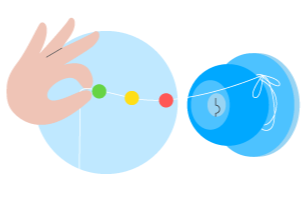
- It doesn’t allow you to quantify the progress. I think I saw some benefits. But, did I? I have no data – so I can’t double check my progress. This was demotivating.
- It takes a decent amount of effort and time. 20 minutes a day add up. That is 10 hours a month – and 5 days a year that you lose. Training your eyes with unclear progress
I wanted a vision therapy solution with neither of these downsides. I wanted a simple, cost-effective, science-backed method that:
- Is virtual – and not physical. Therefore, it can not be lost.
- Is invisible. I wanted to train my eyes without others being aware of it. Is data-driven.
- I wanted to clearly see my progress – to guarantee that I’m going in the right direction.
- Is as effort-free and takes as little time as possible. I wanted to ideally do my regular errands – AND train my vision at the same time
And so.. the Lazyeyefix AI software was born developed.
Chapter X
The Brock String 2.0
The Lazyeyefix AI software’s goal is to bring the Brock String into the modern world.

It combines all the benefits of the Brock String:
- Simplicity
- Cost-effectiveness (no financial risk)
- No doctor (no hefty consultation fees and doctor/hospital visits)
- Science-backed (same principles as the Brock String)
- Safety (no surgery)
While making up for all the downsides of the Brock String:
- Is virtual.
- Is invisible.
- Is data-driven.
- And takes as little effort and time.
The Lazyeyefix AI software was created from people with a lazy eye (me) for people with a lazy eye (potentially you).
You know what makes it unique as well? It’s the only lazy eye software that comes with a free trial. Normally, an initial vision therapy consultation can cost you $330.
You know what makes it unique as well? It’s the only lazy eye software that comes with a free trial. Normally, an initial vision therapy consultation can cost you $330.
Click here.
Conclusion
The Truth About The Brock String
The Brock String is a marvellous tool. It’s a science-backed, risk-free and cost-effective tool to train your lazy eye in the comfort of your home. But it goes around with some significant downsides. Including training time, effort required and lack of data (uncertainty).
Now, let me ask you: Have you tried the Brock String before? What was your experience like? Please let me know below in the comments.
Thanks for reading and all the best to you,
Florian
References:
- https://actascientific.com/ASOP/pdf/ASOP-04-0244.pdf
- https://webvision.med.utah.edu/book/part-xii-cell-biology-of-retinal-degenerations/age-related-macular-degeneration-amd/
- https://www.ncbi.nlm.nih.gov/pmc/articles/PMC3658155/
- https://en.wikipedia.org/wiki/Blind_spot_(vision)
- https://en.wikipedia.org/wiki/Blind_spot_(vision)
- https://pubmed.ncbi.nlm.nih.gov/11248269/
- http://webeye.ophth.uiowa.edu/eyeforum/cases/129-accommodative-esotropia.htm
- https://pubmed.ncbi.nlm.nih.gov/3550561/
- https://www.sciencedirect.com/science/article/abs/p..
- https://psych.hanover.edu/classes/sensation/chapters..
- https://pubmed.ncbi.nlm.nih.gov/14970796/






